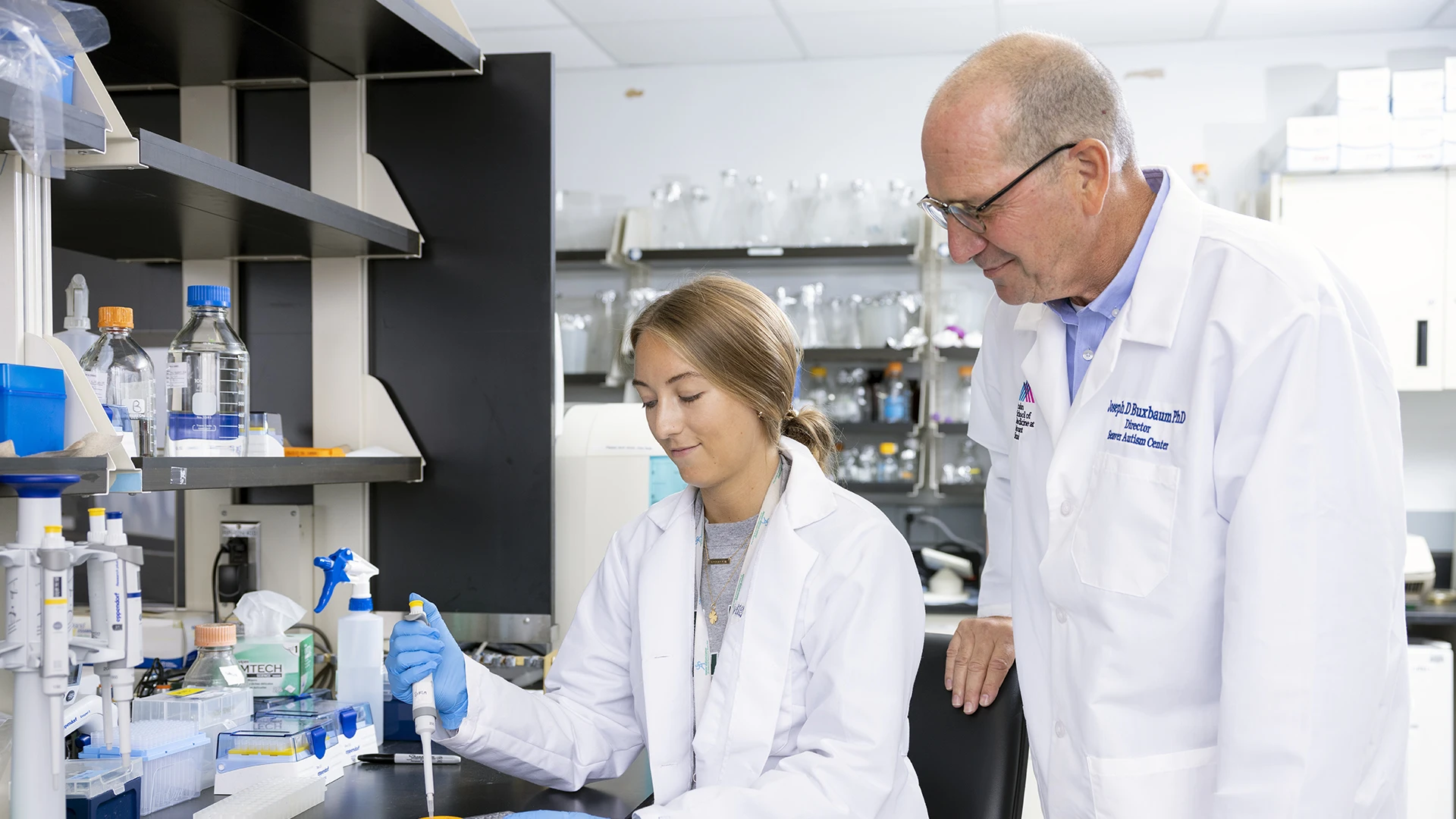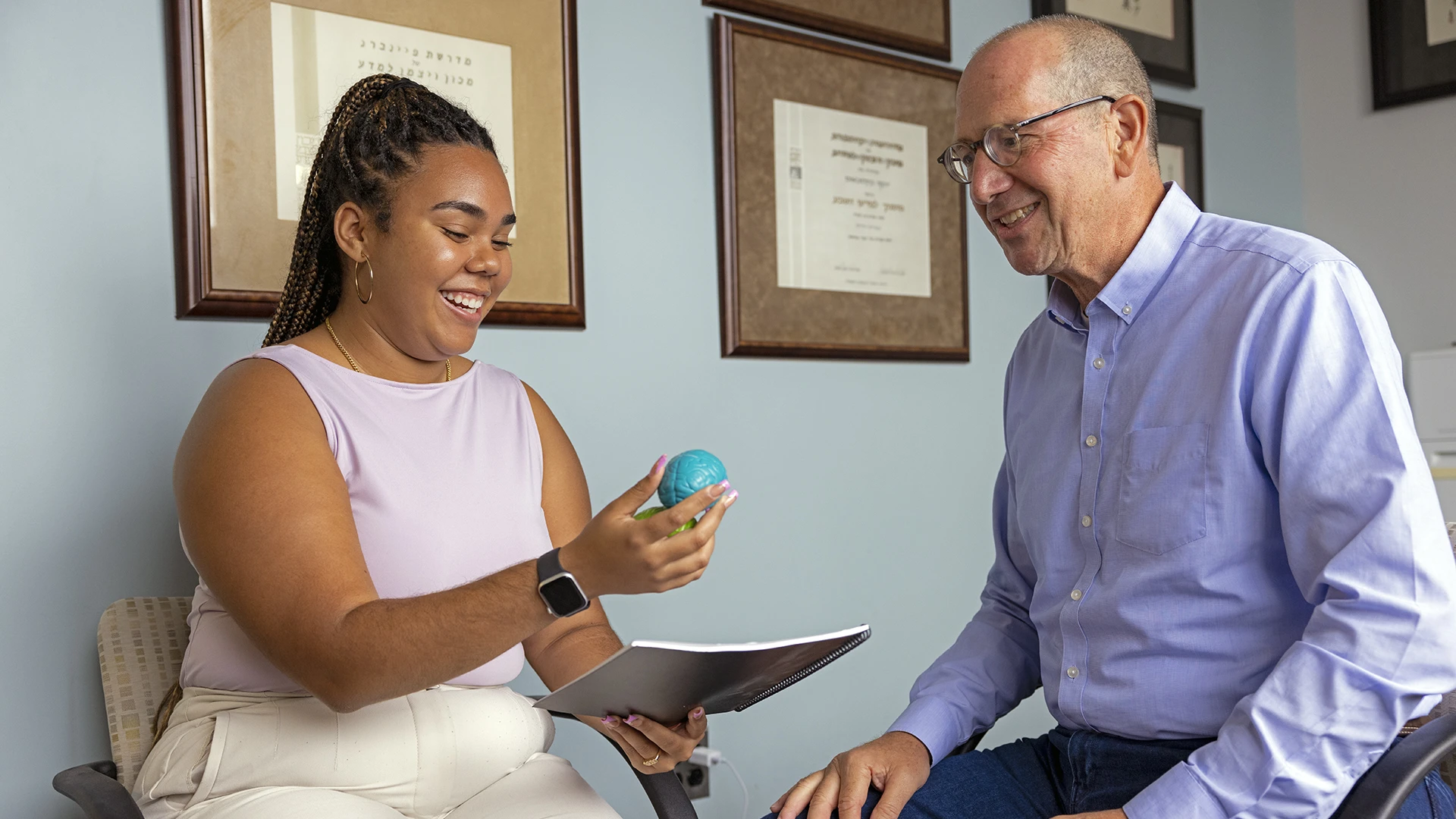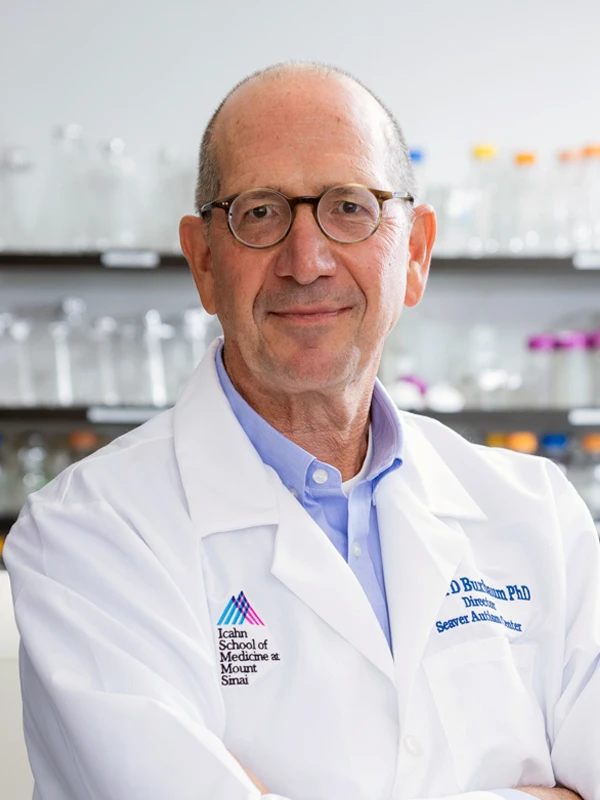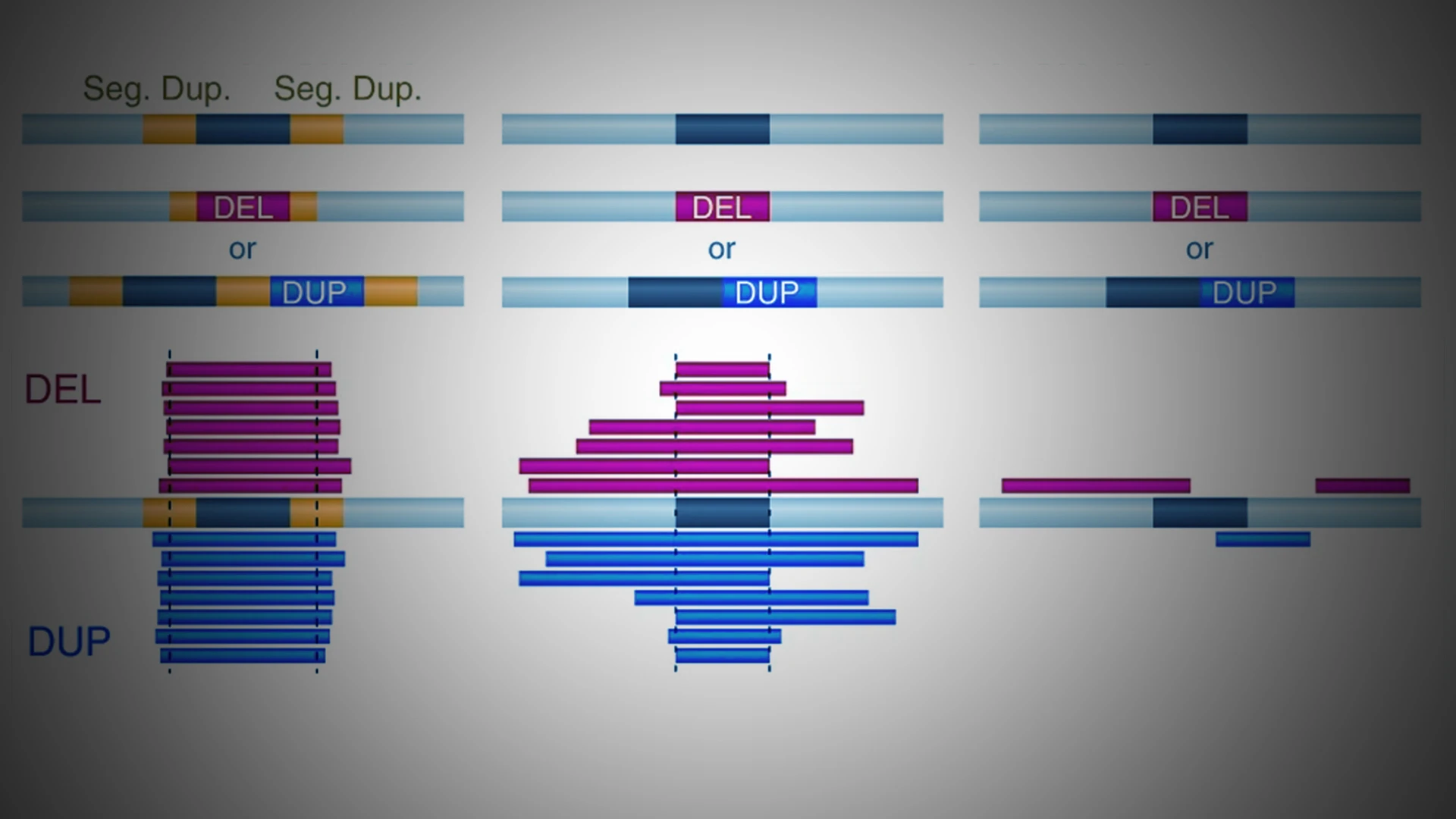Autism spectrum disorder was first understood to have links with genetics 20 years ago. Looking back, Joseph D. Buxbaum, PhD, marvels at his and his colleagues’ naiveté and what they thought of the condition.
“For good reason, we thought there were a handful of genes that, if we found them, would enable us to understand the biology of autism,” recalls Dr. Buxbaum, Director of the Seaver Autism Center for Research and Treatment at Mount Sinai, and Professor of Psychiatry, Neuroscience, and Genetics and Genomic Sciences, at the Icahn School of Medicine at Mount Sinai.
Today, he says, an estimated 1,000 genes—approximately 5 percent of our genes—are thought to contribute to autism risk if mutated. The fact that so many genes are disrupted, many of which may play key roles in defining who we are and building our social lives, creates a need to identify these mutations.

Joseph Buxbaum, PhD, with with graduate student Lauren Dierdorff.
Dr. Buxbaum is furthering these efforts through a new genetic sequencing study by the Autism Sequencing Consortium (ASC), which he co-founded in 2010 and co-leads, involving more than 50 institutions. The study involved an international team of researchers who collected and analyzed 63,327 participant samples, 20,000 of which were from individuals with autism, making it the largest undertaking of its kind to date. In addition, the study leveraged additional participant samples for individuals with motor, cognitive, and language delay.
The study, whose findings were published August 18, 2022, in Nature Genetics, identified 185 genes strongly associated with the condition. The Seaver team, using the Swedish National Patient Register, has now shown that those genes provide a key for making a genetic diagnosis in 30 percent of individuals with autism.
“We know there are many genes that, when mutated, contribute to autism, and through this study we were able to bring together multiple types of mutations in a wide array of samples to get a much richer sense of the genes and genetic architecture involved in autism spectrum disorder,” Dr. Buxbaum says.
The Seaver team is now leveraging CRISPR gene editing technology for a better understanding of the biology of autism and identification of shared pathways. They are using CRISPR to mutate the top autism genes in nerve cells to understand the biological impact. This would open the door for drug discovery and development for autism spectrum disorder. But Dr. Buxbaum cautions that the sheer number of genes being identified will likely necessitate a precision medicine approach.
“A precision medicine approach is typically necessary when we encounter a condition or illness that is biologically very complex,” he explains. “What we have shown with this study is that autism is biologically very complex, and there will not be one therapeutic agent that is going to benefit everyone.” That said, the genes being identified create the potential for stratification, identifying pathway convergence, and pursuing novel therapeutics, he adds.
Uncovering Links Between Autism and Developmental Delays
The research team also explored genes, mutations, and cellular expression patterns that are shared among individuals with autism and developmental delays, typically cognitive and motor delays.
They found that there is overlap among most autism and developmental delay risk genes, but that some of these genes are more likely to be mutated in autism while others are more likely to be mutated in developmental delay. Furthermore, genes associated with developmental delay were more likely to influence earlier nerve cell development, while those associated with autism were more likely to influence later nerve cell development.
Additionally, in an analysis of more than 20,000 samples from individuals with schizophrenia, researchers found that genes strongly associated with autism were more likely to be associated with genes that increase risk for schizophrenia.

Dr. Buxbaum with clinical research coordinator Thariana Pichardo.
The goal for Dr. Buxbaum now is to continue discovering genes, interpret their significance using data sets such as the Swedish National Patient Register, and use those clinical findings to facilitate drug discovery and development. At Mount Sinai, faculty members are investigating genes that are of top interest through clinical trials with existing and novel compounds, and Ana Kostic, PhD, recruited from the pharmaceutical industry, has been tasked with leading the effort to identify novel compounds as Director of Drug Discovery at the Seaver Autism Center.
“We are already gaining insights on which treatments work, and there is no question in my mind that we will see something come to the fore in the realm of precision medicine in autism in the next four to five years,” Dr. Buxbaum says.
Featured

Joseph D. Buxbaum, PhD
Director of the Seaver Autism Center for Research and Treatment; Professor of Psychiatry, Neuroscience, and Genetics and Genomic Sciences
